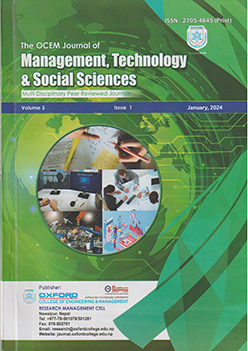
Trends of Fast Food Intake among Female Students of Colleges in Banke District
Bhagawoti Sharma1*, Thalindra Prasad Pangeni2 1Department of Health Education, Mahendra Multiple Campus Nepalgunj, Banke 2 Skill Development Section, National Health Training Center *Corresponding Email: bhagawoti39kafle@gmail.com
Abstract
Fast food, characterized by its quick preparation and low nutritional value, often contains high levels of fat, salt, sugar, and calories. This study aims to explore the correlation between the socio-demographic attributes of female college students and their fast food consumption patterns. Employing a cross-sectional research design, a total of 286 respondents were selected through a random sampling process from four distinct colleges located in the Banke district.
The findings of the study reveal that a significant majority (83.6 percent) of the respondents engage in fast food consumption, with 38.5 percent opting for solid food choices and 70.3 percent preferring liquid fast food options. Furthermore, 70.3 percent of the respondents exhibit a preference for packaged fast foods. In terms of timing, 45.1 percent consume fast food during the afternoon, with the least number of respondents consumed fast food during the night. In relation to frequency, 28% of the participants report consuming fast food 2 to 3 times daily, while a smaller percentage indulge in fast food consumption twice a day. Notably, the research establishes a noteworthy association between age, religion, and the educational backgrounds of respondents’ fathers and mothers with their fast food consumption habits.
In contrast, the study does not find a significant connection between various types of fast food consumption and the caste of the sampled students. Consequently, it underscores the importance of raising awareness about the potential health risks associated with fast food consumption, emphasizing the need for targeted initiatives to reduce the prevalence of such dietary choices among college students.
Keywords:Association, fast food Consumption, fast food trend, frequency of eating fast food, health education, quantitative
